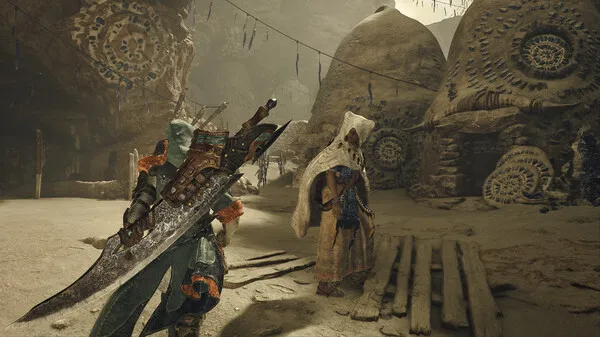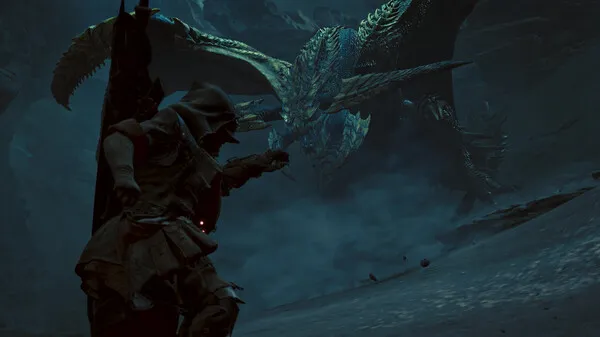Monster Hunter Wilds is the sixth mainline installment in Capcom’s iconic monster-slaying franchise, and it introduces a host of new mechanics, biomes, and challenges that push both new and veteran hunters to adapt. From dynamic weather systems to evolving monster behavior, the game demands strategic thinking, mechanical skill, and resource management. This guide breaks down the journey from novice to apex hunter into 10 structured sections, each arranged by gameplay progression and thematic relevance. Whether you're exploring the Forbidden Lands or preparing for Arch-Tempered hunts, this guide will help you thrive in Monster Hunter Wilds.
- Understanding the Forbidden Lands The Forbidden Lands are the central setting of Monster Hunter Wilds, featuring diverse biomes like the Seikret Plains, Crimson Hollow, and the Stormreach Cliffs. Each region has unique endemic life, weather patterns, and terrain hazards.
Navigating these zones requires preparation. Sandstorms in Seikret reduce visibility and affect monster behavior, while Crimson Hollow’s volcanic activity can damage armor over time. Learn the geography and environmental cues to avoid ambushes and maximize resource gathering.
Key Tips:
- Use the Seikret Compass to track weather shifts
- Equip heat-resistant gear in volcanic zones
- Mark endemic life for fast travel and buffs

- Choosing the Right Weapon Monster Hunter Wilds features 14 weapon types, each with new Wild Arts and combo extensions. Choosing the right weapon depends on your playstyle and the monster you're facing.
For example, the Great Sword now includes the “Shatterseal” Wild Art, which boosts damage after a charged slash. Insect Glaive users can deploy Omega Rods for aerial combos. Experiment in the Grand Hub’s training area to find your ideal weapon.
Weapon Selection Tips:
- Try each weapon in the training zone
- Match weapon type to monster mobility
- Use Wild Arts strategically for burst damage
- Mastering Combat Mechanics Combat in Wilds is faster and more reactive. Monsters adapt to your tactics, flee dynamically, and use terrain to their advantage. Learning how to read tells and exploit openings is crucial.
Focus Mode allows precise targeting of monster parts, while Offset Attacks let you counter mid-combo. Use Power Clashes to interrupt monster charges and Sneak Attacks to open fights with critical damage.
Combat Techniques:
- Use Focus Mode for part breaks
- Time Offset Attacks to counter roars
- Trigger Power Clashes during charge animations
- Building and Managing Your Seikret The Seikret is your customizable mount and mobile base. It can be outfitted with gear like the Chocobo Saddle (from the FFXIV collab) or the Storm Lantern for night hunts. You can also assign it roles like scouting or healing.
Managing your Seikret’s stamina and gear loadout is essential. Use the Seikret Workshop in the Grand Hub to upgrade its armor and AI behavior. A well-equipped Seikret can turn the tide of battle or help you escape dangerous encounters.
Seikret Management Tips:
- Upgrade gear regularly at the Workshop
- Assign roles based on hunt type
- Use Seikret commands for tactical support
- Crafting and Farming Essentials Crafting is deeper than ever. You’ll need to farm materials from monsters, endemic life, and environmental nodes. Use the Material Retrieval system to automate farming routes and optimize your inventory.
Focus on crafting layered armor, decorations, and talismans. The new Omega Attire requires rare drops from event monsters like Omega Planetes. Use the Dreamspell Festival quests to gather seasonal materials.
Crafting Priorities:
- Automate farming with Retrieval routes
- Prioritize layered armor for defense and style
- Use festivals for rare crafting items
- Navigating Quests and Progression Monster Hunter Wilds introduces a dynamic quest system. Story quests unlock new regions and mechanics, while event quests offer unique rewards. Challenge quests test your skills with time limits and modifiers.
Track your Hunter Rank and Mastery Level to unlock tougher hunts. Use the Grand Hub’s Quest Board to filter by difficulty, monster type, and reward. Don’t skip side quests—they often unlock gear and Seikret upgrades.
Questing Tips:
- Complete side quests for gear unlocks
- Use filters to find optimal hunts
- Track HR and Mastery for progression
- Multiplayer and Link Parties Multiplayer in Wilds supports crossplay and Link Parties—persistent groups that share progress and resources. Join a Link Party to access shared Seikret upgrades, layered armor sets, and party-exclusive quests.
Communication is key. Use gestures, quick chat, and the new SOS Meating Pendant to signal for help. Coordinate roles during hunts—assign one player to traps, another to buffs, and others to DPS.
Multiplayer Tips:
- Join Link Parties for shared progression
- Use gestures and chat for coordination
- Assign roles for efficient monster takedowns

- Managing Skills and Decorations Skills in Wilds are tied to armor, decorations, and talismans. Use the Skill Matrix to plan builds and avoid redundancy. New skills like “Stormcall” and “Echo Guard” offer elemental resistance and counterplay.
Decorations are crafted using monster parts and festival tokens. Use the Decoration Forge to preview skill synergies. Talismans can be rerolled using the Dreamspell currency earned from seasonal events.
Skill Optimization Tips:
- Use Skill Matrix to plan builds
- Reroll talismans for ideal stats
- Combine decorations for multi-skill synergy
- Preparing for Arch-Tempered Hunts Arch-Tempered monsters are the ultimate challenge. They have enhanced AI, resist traps, and deal massive damage. Prepare by crafting Gamma Armor Sets and using festival gear for elemental resistance.
Use layered weapon builds to adapt mid-hunt. For example, switch from raw damage to elemental if the monster changes phases. Bring support items like Lifepowder, Farcasters, and Seikret buffs.
Arch-Tempered Prep:
- Craft Gamma Armor for defense
- Use layered weapons for flexibility
- Bring support items and coordinate with team
- Endgame and Seasonal Events The endgame revolves around festivals, collabs, and rotating event quests. Participate in the Festival of Accord to earn exclusive gear, gestures, and furniture. Title Update 3 introduces Omega Planetes and the Dreamspell Halloween event.
Use the Event Calendar to plan your hunts. Permanent quests like “These Roots Run Deep” offer rare materials year-round. Stay active in the community to trade tips and join seasonal Link Parties.
Endgame Tips:
- Track event schedule for rare rewards
- Join seasonal Link Parties for bonuses
- Use permanent quests for consistent farming

Conclusion Monster Hunter Wilds is a rich and demanding game that rewards preparation, adaptability, and teamwork. From mastering combat mechanics to optimizing your Seikret and crafting layered gear, every system is interconnected. This guide provides a roadmap for success across all stages of the game—from early exploration to endgame festivals. With the right strategy and mindset, you’ll not only survive the Forbidden Lands—you’ll conquer them.

















